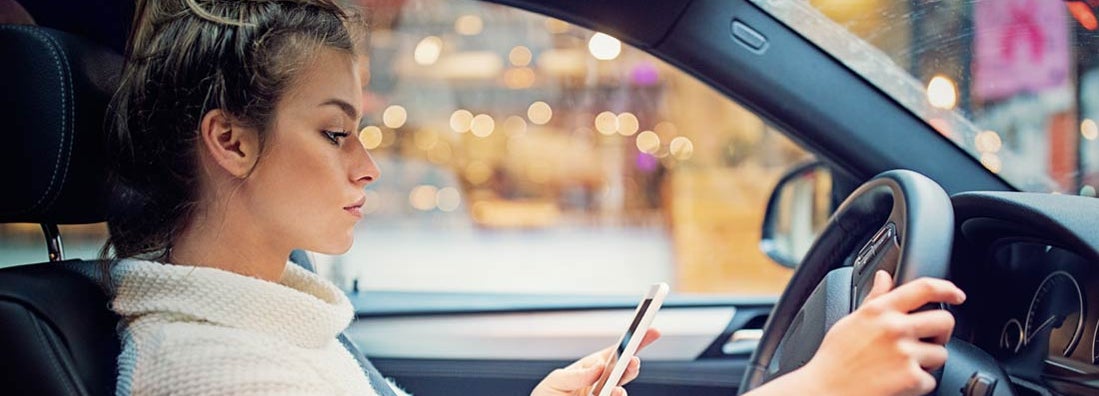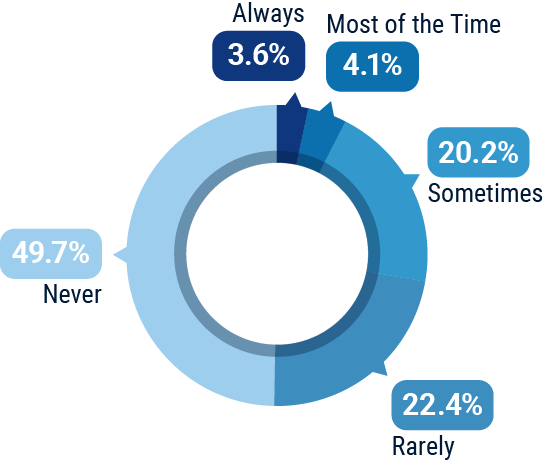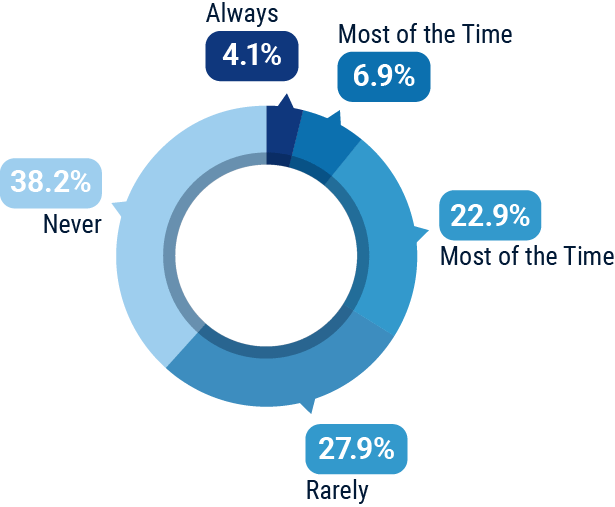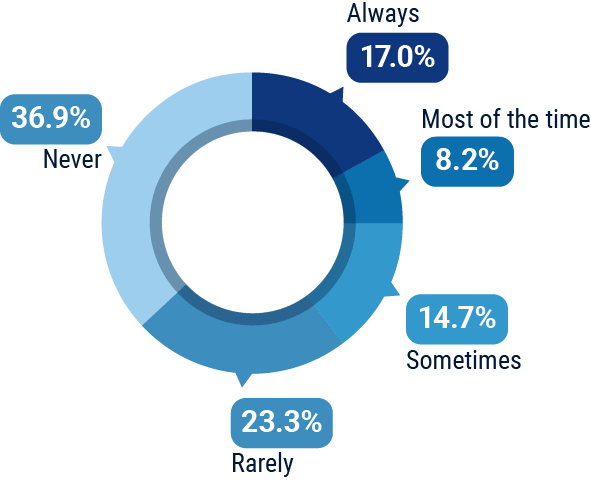New York Distracted Driving
(It's more than just not texting.)

There are more than 300,000 car accidents every year in New York. And most of these are simple distracted driving mistakes that are completely preventable.
That’s why arguably THE most important thing you can do behind the wheel is keep your hands at 10 and 2 and your eyes on the road. Always.
What Is Distracted Driving?
Distracted driving is any activity that takes a person’s attention away from the primary task of driving. This includes:
- Daydreaming
- Eating / drinking
- Grooming
- Reading
- Viewing maps, a GPS, or another navigation system
- Adjusting the radio or temperature controls
- Having conversations with passengers
Most distractions are perfectly legal, though undeniably hazardous. And current laws in the state of New York focus primarily on the use of handheld electronic devices (like cell phones), so it's up to drivers themselves to minimize or avoid any possible distractions.
Distracted Driving Statistics in New York
You don’t have to follow the local news every night to know that distracted driving is a problem, but here are a few statistics that might help you understand just how serious it is in New York:
- In 2001, New York issued the first statewide handheld cellphone ban in the US.
- Driver inattention or distraction is a factor is 20% of all crashes in New York. It is responsible for:
- 10.4% of all fatal crashes in this state
- 24.5% of all injury-producing crashes
- 24.9% of all collisions with pedestrians
- Nearly 28% of New York drivers surveyed admitted to texting while driving sometimes or more frequently.
- More than 90% of New York drivers age 45 and older believe that texting while driving affects one’s ability to drive “a great deal.” Only 65% of drivers under the age of 21 feel the same.
- In 2018, New York State police issued 4,542 distracted driving citations
- 2,772 were for handheld cell phone use
- 1.770 were for texting while driving
How Often Do You Send or Receive Texts While Driving?

How Often Do You Talk on a Cell Phone While Driving?

When You Talk on a Cell Phone While Driving, How Often Do You Use a Handheld Device?

In a survey conducted by the NY Department of Transportation, drivers admitted to using their cell phones while driving in alarming numbers.
Texting while driving is particularly hazardous, and yet fewer than half the respondents could say that they never do this. Police in the state urge drivers to put their phones down until they reach their destinations or can safely pull over and park their cars.
Does New York Have Laws against Distracted Driving?
Yes.
New York’s statewide distracted driving law currently states:
- All drivers must use hands-free devices when talking on cell phones.
- Text messaging, game playing, and similar usage of handheld electronic devices is prohibited for all drivers.
- Viewing, taking, or transmitting images is prohibited for all drivers
- Television screens are not permitted within the driver’s view.
- Taxi drivers in New York City are not permitted to use cell phones, even in hands-free mode.
Several new distracted driving bills have been filed for the state’s 2019-20 legislative session, so it's possible that additional laws may be passed in the foreseeable future.
Are There Any Exceptions to the Distracted Driving Laws in New York?
Yes.
New York does makes exceptions to its distracted driving laws. These include:
- Drivers are permitted to used electronic devices that are built into their vehicles, like dashboard computers.
- Drivers may use GPS devices, mobile phones, MP3 players, and other similar devices as long as the devices are being used in hands-free mode only.
- Drivers are permitted to use their handheld mobile phones only for the purpose of calling 911 to report an emergency, or to contact their physician or a hospital in the event of a personal emergency.
- Drivers who are operating an authorized emergency vehicle are exempt from the state’s distracted driving laws when they are using portable electronic communication devices in the course of performing their official duties.
New York Distracted Driving Laws at a Glance
| Yes | No | |
| Is texting while driving legal? | X | |
| Can you send/receive texts at a red light? | X | |
| Is handheld device use permitted? | X | |
| Any special restriction for young drivers? | X | |
| Is headphone/headset use permitted? | X * |
* Permitted when used in one ear only.
Is It Legal to Eat a Cheeseburger While Driving in New York?
Yes. And no.
Distracted driving comes in many forms, and eating a cheeseburger can be just as distracting as talking on a handheld cell phone. Basically, anything that takes your attention away from the primary task of driving presents a potential hazard.
So, what happens if a police officer in New York spots you eating a cheeseburger while driving down the highway? Well, that depends. There is no law that specifically states that you cannot eat while driving in this state.
However, New York does have a “dangerous driving” regulation that may be used against you if the distraction of eating causes you to drive erratically.
If you just have to eat while driving, do it with extreme caution to avoid getting into an accident or committing a traffic violation. Otherwise, you’d probably be better off eating your Big Mac indoors or in the parking lot.
What Is the Difference between Primary and Secondary Enforcement of Distracted Driving Laws?
Primary enforcement of distracted driving laws means the police can pull you over if they see you violating state distracted driving laws.
Secondary enforcement of distracted driving laws means the police can cite you for violating distracted driving laws only if you break another law while doing so.
New York uses primary enforcement.
This means that even if you're in total control of your vehicle while responding to a text message or talking on a cell phone, a police officer who sees you doing so can pull your over and write up a citation for violating the state’s distracted driving laws.
What Is the Penalty for Distracted Driving in New York?
The penalties for a distracted driving citation in New York are as follows:
- For a first offense: a $50 to $200 fine
- For a second offense (within an 18-month span): a $50 to $250 fine
- For a third offense (within an 18-month span): a $50 to $450 fine
- Every citation also adds 5 demerit points to your driving record.
For drivers with learner’s permits and intermediate licenses:
- For a first offense: suspension of the license or permit of 120 days
- For a second offense within six months: a revocation of the license or permit for one year
New York Compared to the rest of the US on texting and driving restrictions

Every state in the US has a law that prohibits some sort of cell phone usage except Montana and Arizona. However, in 2021, newly enacted cell phone restriction laws will go into effect in Arizona.
Does a Distracted Driving Citation Increase Insurance Rates?
Yes.
Every violation of the state’s distracted driving law adds five points to your driving record, and this means that your car insurance company will be made aware of the infraction, and your rates will most likely go up.
The amount of your rate hike depends on which insurance company you use and your overall driving history. In New York, insurance rates can go up an average of $93 a year following a distracted driving citation.
And if you have a safe driver discount, you can say goodbye to the lower rates it affords you. Distracted driving will almost certainly disqualify you from receiving this discount, and this can cause your rate increase to be even more painful.
What If I Drive into Another State?
Distracted driving laws vary by state, so make sure that if you drive into a neighboring state with different laws, you follow their rules once you hit the state line.
Claiming ignorance of the law won't get you out of a citation. Distracted driving laws are being updated all the time, so it's important you stay informed and do your research before taking your next long car trip.
Vermont, Massachusetts, Connecticut, and New Jersey all place restrictions on cell phone use (even hands-free) for younger drivers.
Does this mean that if a 17-year-old driver is talking on the phone while crossing the border into one of these states, they're breaking the law? Yes, it does. To remain compliant, the teen would need to end the phone call immediately.
Massachusetts and Pennsylvania currently have no laws outlawing the use of handheld cell phones by drivers. Does this mean you can switch from hands-free to handheld when you are driving through these states?
Yes it does, but why would you? Just because you can do something doesn’t mean you should.
What's New York Doing To Prevent Distracted Driving?
New York has strong laws when it comes to distracted driving. Lawmakers in the state continue to assess the effectiveness of these laws and have been introducing numerous new bills intended to strengthen them.
The state is considering allowing law enforcement to use a “textalizer.” This technology lets law enforcement scan a driver’s cell phone to see if it was in use at the time of an accident without revealing any personal information.
In the meantime, the state continues to educate the public on the dangers of distracted driving through a number of outlets, including ads, billboards, and schools. It's having a positive effect, too.
The percentage of drivers between the age of 16 and 20 who believe that texting while driving creates a hazard jumped from 46% to 65% between 2017 and 2018.
So What Can You Do?
Quite simply, just put the phone away — even if that means in the glove compartment. The fines themselves are definitely not worth it, let alone the more serious consequences to you and others on the road. Let’s all just get where we’re going safely and save the texting until you get home.
http://www.safeny.ny.gov/annualRpt/2018GTSCAnnualReport.pdf
http://safeny.ny.gov/phon-ndx.htm
https://www.troopers.ny.gov/Traffic_Safety/Distracted_Driving/
